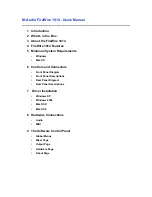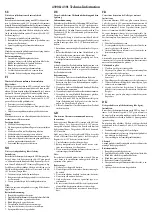
Restoring data
Using AppAssure, you can instantly recover or restore data to your physical machines (for Windows or
Linux machines) or to virtual machines from stored recovery points for Windows machines. The topics in
this section describe how you can export a specific recovery point for Windows machines to a virtual
machine or to roll back a machine to a previous recovery point.
If you have replication set up between two cores (source and target), you can only export data from the
target core after the initial replication is complete.
About exporting protected data from Windows machines to virtual machines
AppAssure supports both a one-time export or continuous export (to support virtual standby) of Windows
backup information to a virtual machine. Exporting your data to a virtual standby machine provides you
with a high availability copy of the data. If a protected machine goes down, you can boot up the virtual
machine to then perform recovery.
The following diagram shows a typical deployment for exporting data to a virtual machine.
Figure 4. Exporting data to a virtual machine
You create a virtual standby by continuously exporting protected data from your Windows machine to a
virtual machine. When you export to a virtual machine, all of the backup data from a recovery point as
well as the parameters defined for the protection schedule for your machine will be exported.
You can perform virtual export of recovery points for your protected Windows or Linux machines to
VMware, ESXi, Hyper-V, and Oracle VirtualBox.
NOTE: The Appliance tab displays all the virtual machines but only supports the management of
Hyper-V and ESXi virtual machines. To manage the other virtual machines use the hypervisor
management tools.
NOTE: The virtual machine to which you are exporting must be a licensed version of ESXi, VMWare
Workstation, or Hyper-V and not the trial or free versions.
57
















































